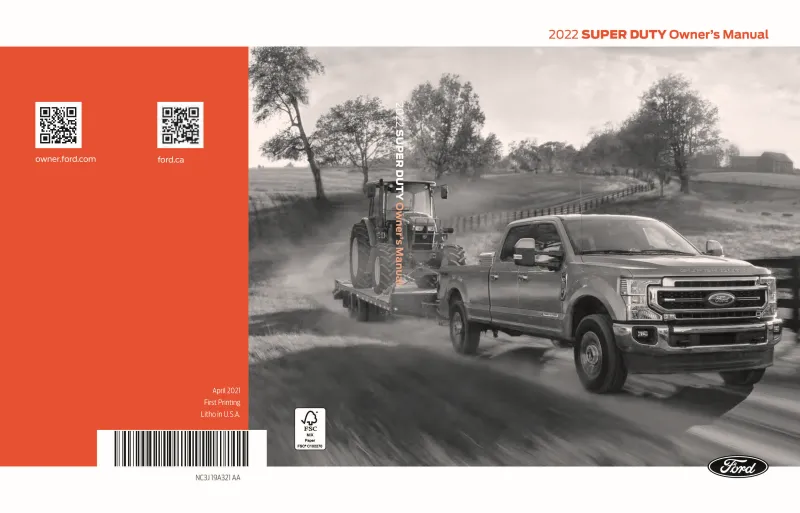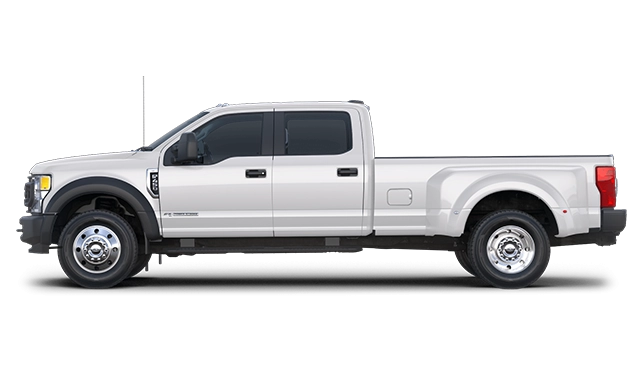2022 Ford Super Duty Owner's Manual

Table of Contents
2022 Ford Super Duty Overview
Introduction
The 2022 Ford Super Duty stands as a benchmark in heavy-duty trucks, delivering remarkable power, advanced technology, and unmatched capability. This formidable vehicle is designed for both work and play, offering a blend of ruggedness and luxury that sets it apart in the competitive truck segment. With a variety of configurations and options available, Super Duty caters to a wide range of drivers, whether they're hauling a trailer or commuting to the office.
Powertrains
The 2022 Ford Super Duty impresses with an array of robust powertrains. Buyers can choose between three formidable engines: the standard 6.2L V8, a powerful 7.3L V8, and the class-leading 6.7L Power Stroke® Turbo Diesel V8. Each option is designed to maximize towing capacity, fuel efficiency, and overall performance, offering up to 37,000 pounds of maximum towing capability when properly equipped. With Ford’s TorqShift® 10-speed automatic transmission, smooth shifting and enhanced performance are guaranteed no matter the load.
Trims
The 2022 Super Duty offers a wide range of trims to suit every need, including the F-250, F-350, and F-450. Each trim levels up the luxury and tech features, from the work-ready XL to the opulent Platinum and Limited models. Features like advanced driver assistance systems, heated and ventilated seats, and premium sound systems enhance the driving experience, making the Super Duty just as comfortable on highways as it is capable on job sites.
Features
This model boasts innovative features like Ford's SYNC® infotainment system, integrated navigation, and FordPass Connect™ with 4G LTE Wi-Fi hotspot capability. A robust suite of safety technologies such as Adaptive Cruise Control, Pre-Collision Assist, and a 360-Degree Camera provide peace of mind both on and off the road. Additionally, the bed features a revolutionaryTailgate Step that enhances loading and unloading, reinforcing the Super Duty's focus on utility.
Owners Manual
The 2022 Ford Super Duty comes with a comprehensive owner's manual that serves as a valuable resource for new owners. It includes vital information about operating the vehicle, understanding its advanced features, and maintaining optimal performance. With clear guidance on the care and use of various functions, drivers can maximize their convenience and safety while enjoying everything that the Super Duty has to offer.
User manual download
The Ford Super Duty owner manual for the 2022 model year is to be found in PDF downloadable format on this page. The owner manual for the model year 2022 is free and in English, but the repair manuals are usually not easy to get and may cost more.
Manual Questions
Fill the form below and someone will help you!

